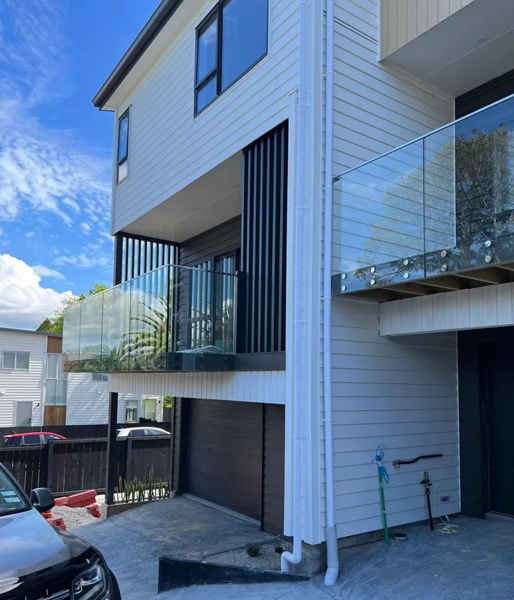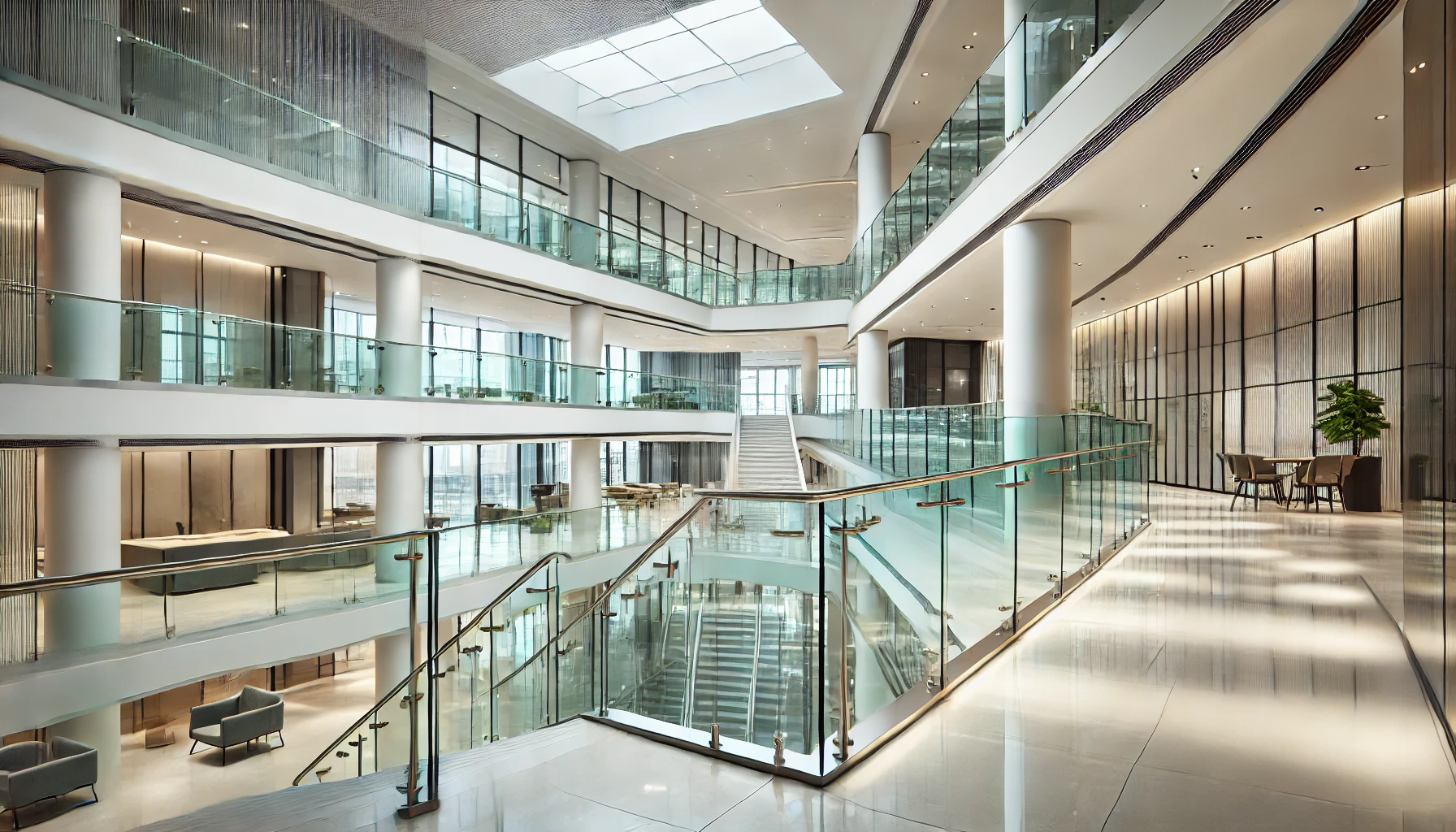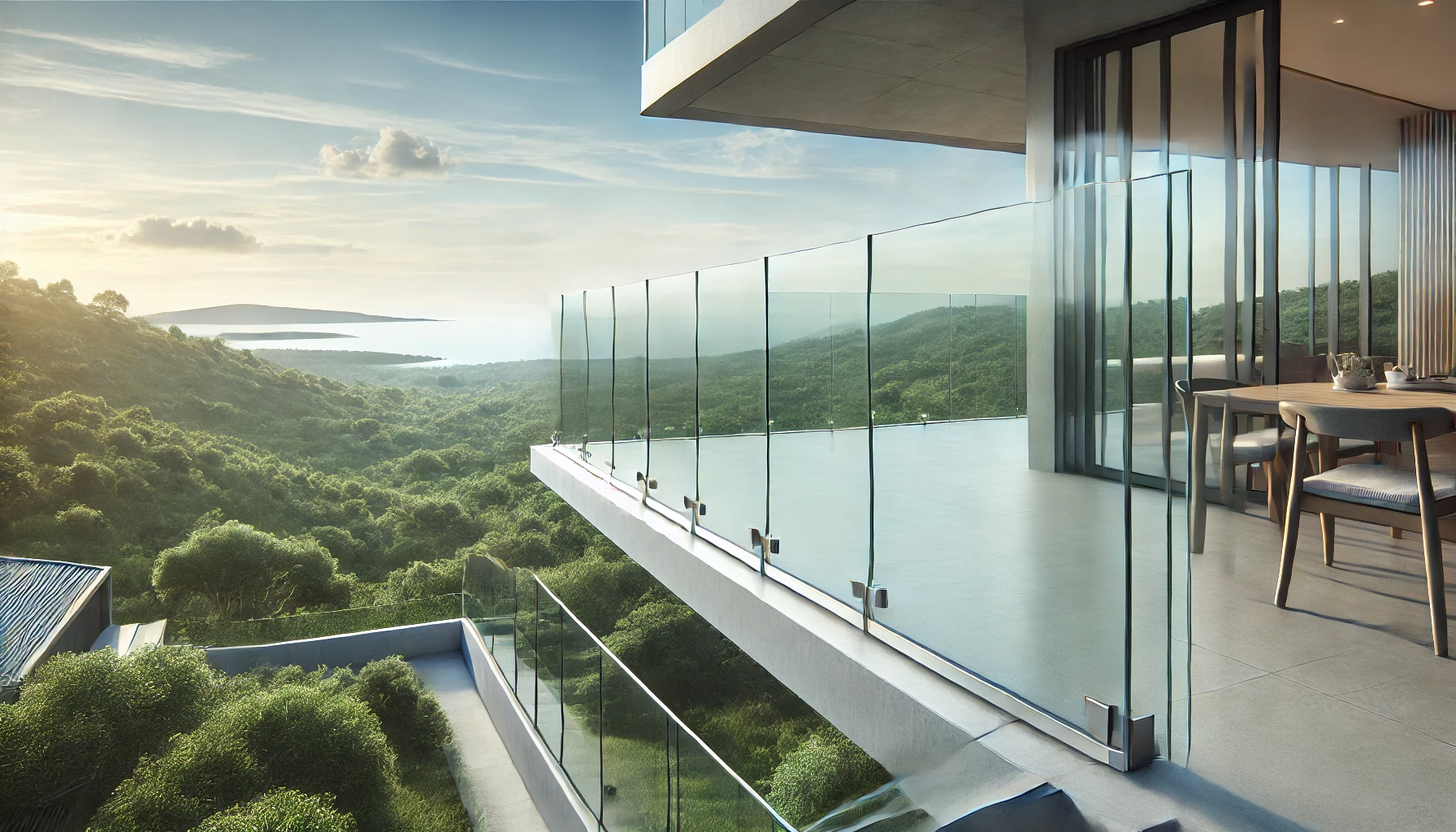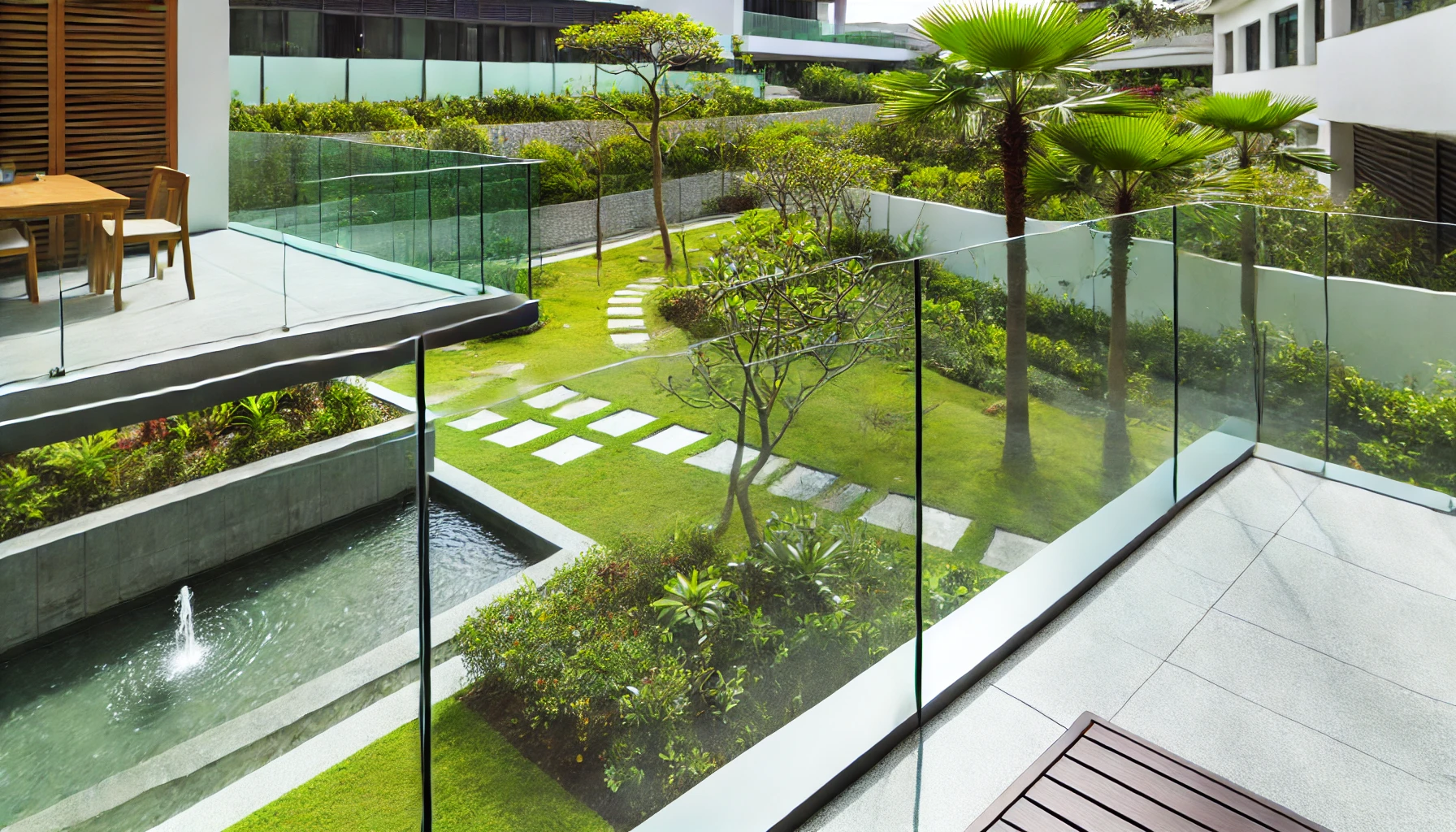Introduction
When it comes to selecting a railing system for your home or commercial space, the material you choose plays a crucial role in determining the overall aesthetic, durability, and safety of the structure. Glass railings have become increasingly popular due to their sleek, modern appearance and the ability to provide unobstructed views. However, they are not the only option available. This article will compare glass railings with other common railing materials—such as wood, metal, and cable—highlighting the advantages and disadvantages of each to help you make an informed decision.
1. Glass Railings
Glass railings are a top choice for those seeking a modern, open look that enhances visibility and light flow in a space. They are commonly used in both residential and commercial settings, including balconies, staircases, terraces, and pool enclosures.
a) Advantages
- Aesthetic Appeal: Glass railings offer a sleek, contemporary look that can elevate the design of any space. Their transparency allows for unobstructed views, making them ideal for locations with scenic surroundings.
- Low Maintenance: Glass is relatively easy to clean and maintain. Regular cleaning with a mild detergent and water is usually sufficient to keep the glass panels looking clear and streak-free.
- Durability and Safety: Tempered or laminated glass panels are highly durable and can withstand significant impact. They are also designed to break into small, blunt pieces if shattered, reducing the risk of injury.
b) Disadvantages
- Cost: Glass railings can be more expensive than other materials due to the cost of the glass panels, framing, and installation. Custom designs or thicker glass panels may further increase the price.
- Privacy Concerns: While glass provides unobstructed views, it can also result in a lack of privacy. Frosted or tinted glass can mitigate this issue, but at an additional cost.
- Cleaning Frequency: Although glass is low maintenance, it does require regular cleaning to prevent the buildup of fingerprints, smudges, and water spots.
2. Wood Railings
Wood is a traditional and versatile material that can be used in a variety of railing designs, from rustic to modern. It is often chosen for its warm, natural appearance and adaptability to different architectural styles.
a) Advantages
- Aesthetic Versatility: Wood railings offer a timeless and classic look that can complement both traditional and contemporary designs. They can be stained, painted, or left natural to suit the surrounding decor.
- Customizability: Wood is easy to cut, shape, and customize, allowing for intricate designs and detailed craftsmanship. This makes it a popular choice for custom projects.
- Warmth and Texture: Wood adds warmth and texture to a space, making it feel more inviting and cozy, especially in residential settings.
b) Disadvantages
- Maintenance Requirements: Wood requires regular maintenance to prevent rot, warping, and insect damage. This may include staining, sealing, or painting every few years, depending on the exposure to the elements.
- Susceptibility to Weather: In outdoor settings, wood can be susceptible to weather-related damage, such as moisture absorption, which can lead to decay and structural weakness.
- Limited Lifespan: Compared to materials like metal or glass, wood has a shorter lifespan and may need to be replaced or repaired more frequently.
3. Metal Railings
Metal railings, particularly those made from stainless steel, aluminum, or wrought iron, are known for their strength and durability. They are often used in both residential and commercial applications where robustness and safety are paramount.
a) Advantages
- Strength and Durability: Metal railings are highly durable and can withstand heavy use and harsh environmental conditions. They are less likely to warp, crack, or rot compared to wood.
- Low Maintenance: Metals like stainless steel and aluminum are resistant to rust and corrosion, making them low-maintenance options. A simple wipe-down with a damp cloth is usually sufficient to keep them clean.
- Variety of Styles: Metal railings can be crafted into a wide range of designs, from sleek and modern to ornate and traditional. This makes them suitable for various architectural styles.
b) Disadvantages
- Cost: High-quality metal railings can be expensive, particularly if custom designs or intricate detailing are required. The cost of materials and installation can add up quickly.
- Heat Retention: Metal railings can become hot to the touch in direct sunlight, which may be uncomfortable or unsafe in certain climates or for outdoor applications.
- Weight: Metal railings can be heavy, requiring a strong structural base for support. This may complicate the installation process and increase costs.
4. Cable Railings
Cable railings are a modern and minimalist option, often used in contemporary settings. They consist of stainless steel cables strung between posts, creating a nearly invisible barrier that allows for maximum visibility.
a) Advantages
- Minimalist Aesthetic: Cable railings offer a sleek, unobtrusive look that complements modern architecture. The thin cables are barely noticeable, allowing for unobstructed views and a sense of openness.
- Durability: Made from stainless steel, cable railings are resistant to rust, corrosion, and weathering, making them a durable option for both indoor and outdoor use.
- Low Maintenance: Cable railings require minimal maintenance, with occasional cleaning and tightening of cables being the primary tasks.
b) Disadvantages
- Installation Complexity: Installing cable railings can be more complex and time-consuming compared to other materials. Ensuring the cables are tensioned correctly is crucial for safety and aesthetics.
- Cost: While the cost of materials may be lower than glass or metal railings, the labor-intensive installation process can increase overall expenses.
- Potential for Sagging: Over time, the cables may loosen and sag, requiring periodic adjustments to maintain the desired tension and appearance.
5. Comparative Summary
Each railing material offers its own set of advantages and disadvantages, making it essential to consider your specific needs and preferences when choosing the right option.
- Aesthetic Appeal: Glass railings are unmatched in providing unobstructed views and a modern look, while wood offers warmth and a traditional feel. Metal railings provide strength and versatility, and cable railings deliver a minimalist design.
- Durability: Metal and glass railings are the most durable options, withstanding environmental factors better than wood or cable.
- Maintenance: Metal and cable railings require the least maintenance, while wood needs regular upkeep, and glass requires frequent cleaning to maintain its appearance.
- Cost: Wood is generally the most affordable material, while glass and metal can be more expensive due to material costs and installation complexity.
Conclusion
Choosing the right railing material involves balancing aesthetics, durability, maintenance, and cost. Glass railings are ideal for those seeking a modern, transparent look, while wood, metal, and cable each offer their own unique benefits. By understanding the strengths and limitations of each material, you can select the best option for your specific project, ensuring that your railing system meets both your functional and design needs.







